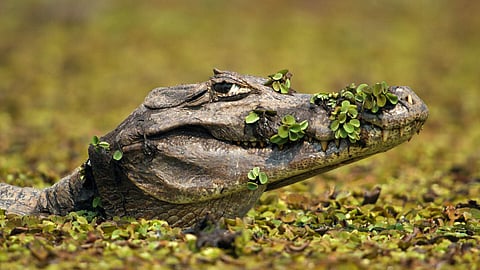
- LIFESTYLE
- FASHION
- FOOD
- ENTERTAINMENT
- EVENTS
- CULTURE
- VIDEOS
- WEB STORIES
- GALLERIES
- GADGETS
- CAR & BIKE
- SOCIETY
- TRAVEL
- NORTH EAST
- INDULGE CONNECT

Changing Planet on Sony BBC Earth is a compelling topical documentary series that takes a global approach to its storytelling. The show delves into various pressing issues that have a widespread impact, emphasising the interconnectedness of these challenges across different regions of the world. Over the course of seven years, the show aims to illustrate how solutions discovered in one location can be applied to address similar issues in other destinations. Season 2 of the show has just launched and we catch up with series producer and executive producer at BBC Studios’ Natural History Unit, Rosemary Edwards, to find out more…
How did the idea of a show like Changing Planet come about?
Traditional natural history shows take many years to make — our wildlife teams spend four or five years documenting amazing animal behaviour but in those years a lot of change can happen because of the threat from many environmental challenges. We realised we don’t return to the environments under threat regularly to see if change is happening. This series is hoping to address that by returning year after year to the same habitats to see if the environmental work being done is having an effect. We are on the brink of losing many species in the next few years — if we can document the fight to save them — that is a powerful story to tell.
How different is the series?
Changing Planet is not a pure animal series. It shows how human beings have such an important part to play in the natural world. It is also a series of hope. We want to show that, despite the alarming reports about the effects of climate change, heating oceans, wildfires and rising temperatures — there are people trying to do something about these issues and many of their efforts are ingenious.
What can we look forward to in Season 2?
The series returns to the habitats explored in series one to see how the issues affecting each ecosystem are developing and also uncover more pioneering projects trying to solve them. In California, we join the Tule River tribe to find out how they use nature-based land management techniques to protect themselves against wildfire and promote biodiversity. Controlled burning has been used by first nation people for thousands of years to prevent run away fires. The tribes are also planning to bring in other help, in the form of beavers. California has lost an estimated 90 per cent of its wetland area as humans continue to tear down beavers’ dams and lodges. Rather than chase beavers off, it is time to invite them back. We return to Kenya to discover how Tsavo’s elephants are coping in increasing drought conditions. We also head to the Cardamom Hills in Cambodia to take part in the release of one of the world’s most endangered reptiles, the Siamese Crocodile and then move to the Maldives, where the world’s coral is being systematically destroyed by climate change and the reefs are suffering. We meet a coral scientist — Prof Steve Simpson, a bio-acoustic fish biologist who has discovered that larval coral responds to the sound of a healthy reef. Prof Simpson travels to the Maldives to collect the sounds of the reef in a bid to play back those sounds to try and attract healthy coral larvae. We then travel to the Arctic, to the Northeast of Greenland, to Zackenberg Research Station’s climate monitoring programme which tracks 2,500 separate data points relating to climate and the ecosystem. This is one of the most important locations in the world in terms of understanding the extent of change and warming in the Arctic and the effects on the rest of the world. We join Prof Niels Schmidt and his team for their annual scientific field trip as they track and collar multiple Muskox, an ice age survivor. And then finally, we move to Brazil where as climate change accelerates, the Pantanal, the world’s largest wetland, is becoming drier, endangering its wildlife and habitat, including Brazil’s apex predator, the jaguar. Changing Planet returns to a project which is habituating jaguars as part of an ecotourism business.
What are you working on next?
Changing Planet Season 3 & 4 — this is a seven-year project so as we finish one documentary we move onto the next. We have already filmed a groundbreaking experiment taking place on coral reefs in the Maldives for Season 3 and are in the planning stage for the following year.
Now on Sony BBC Earth and streaming on SonyLIV.
romal@newindianexpress.com
@elromal